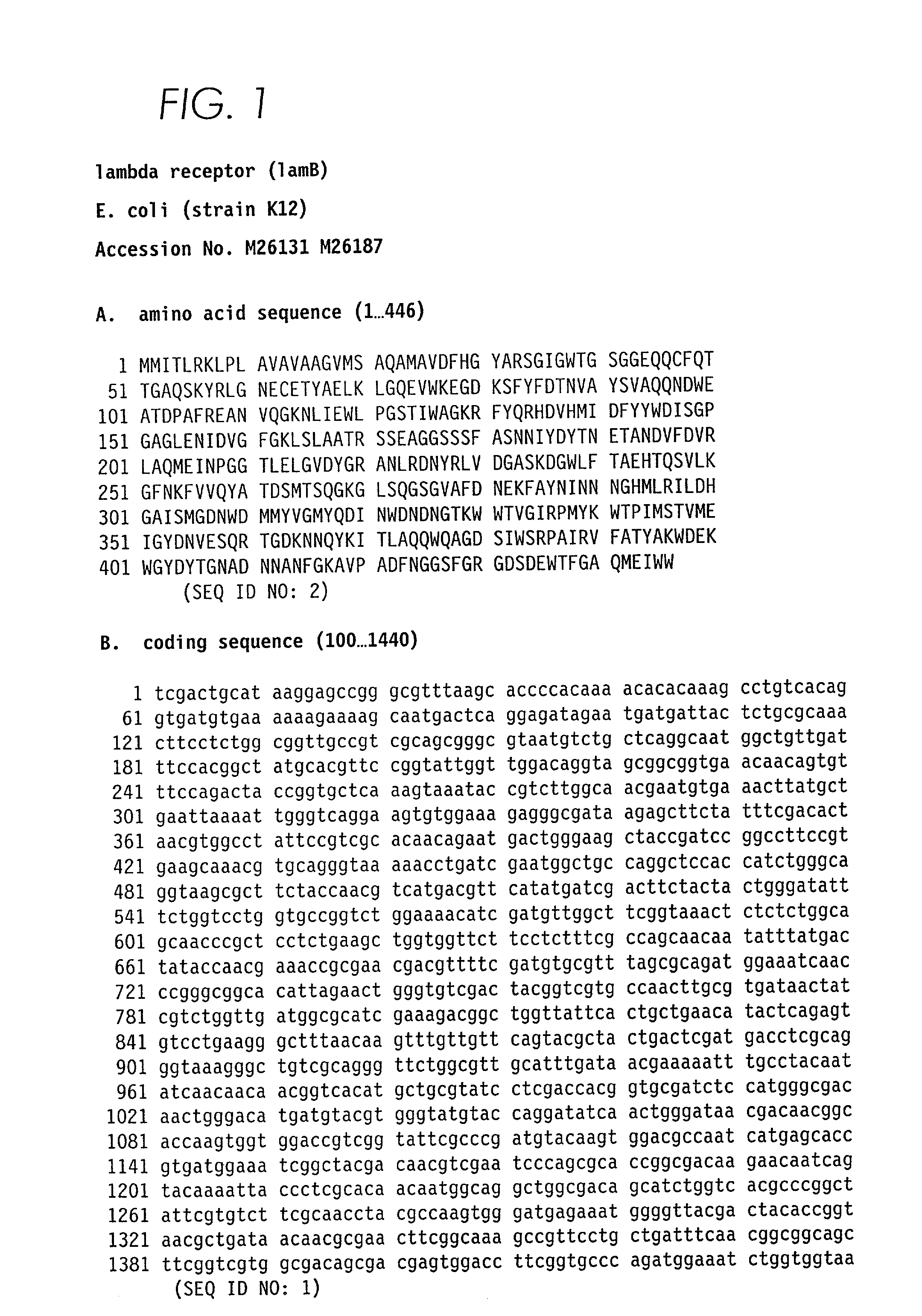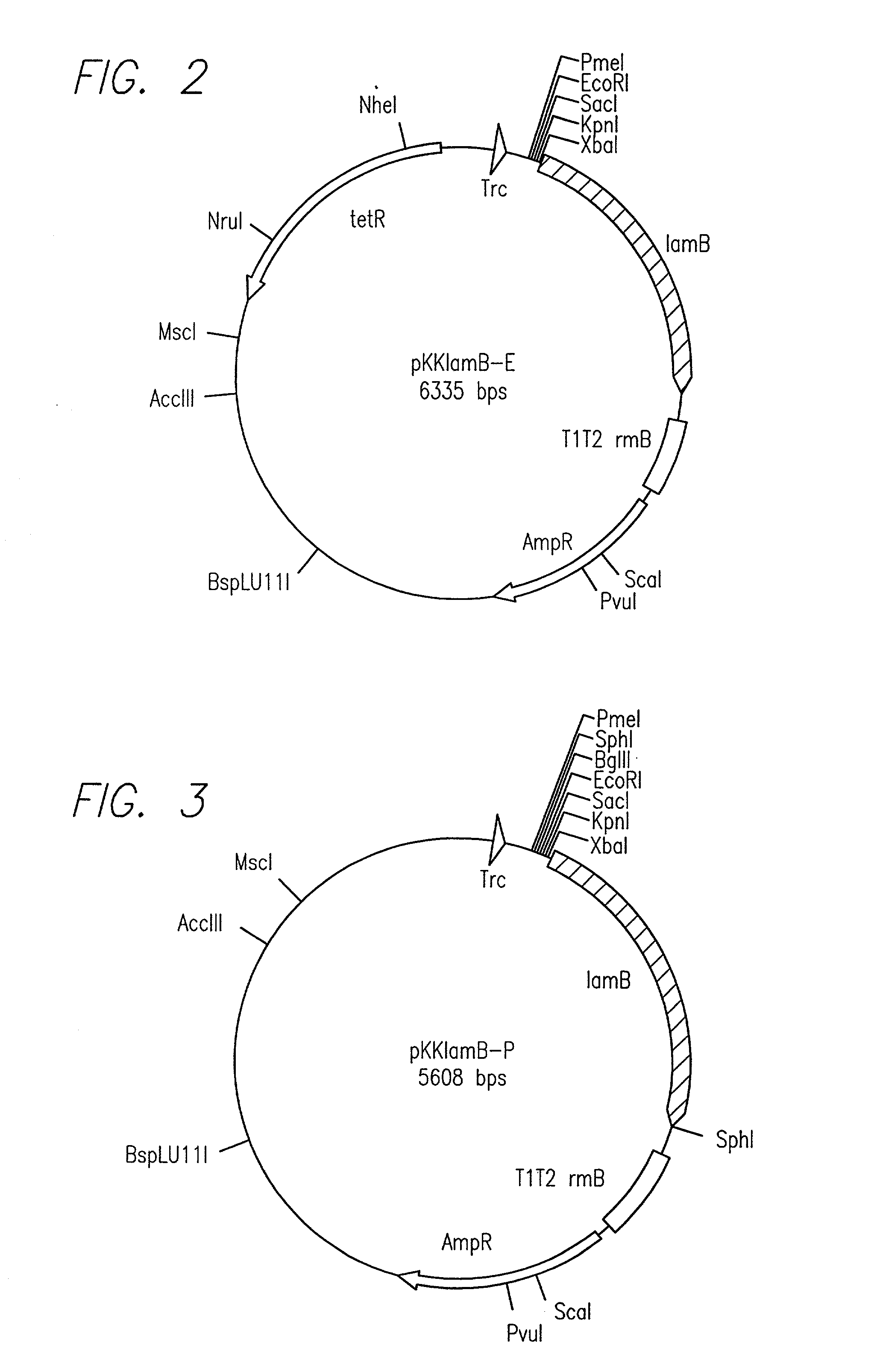Screening system to identify polynucleotides encoding cleavable N-terminal signal sequences
- Summary
- Abstract
- Description
- Claims
- Application Information
AI Technical Summary
Benefits of technology
Problems solved by technology
Method used
Image
Examples
Embodiment Construction
[0020] The present invention relates to a method that facilitates the identification of proteins with a cleavable N-terminal signal sequence. The term "protein" in this application refers to a segment of covalently linked amino acids of at least 2 amino acids in length. Thus, the term "protein" is used to refer to a protein, a polypeptide and a peptide, which may be modified or in its native form, unless the context indicates otherwise.
[0021] The term "signal sequence" refers to a stretch of amino acids that is capable of effecting the localization of a protein in the periplasmatic space, the cell membrane, the outer cell membrane, the extracellular space or more than one of these locations inside or outside the cell. A signal sequence typically is part of the N-terminal portion of a protein. A signal sequence typically is from about 5 to about 50 amino acids in length, and in certain embodiments, typically is about 20 amino acids.
[0022] The term "native form" refers to the form of ...
PUM
| Property | Measurement | Unit |
|---|---|---|
| Electrical resistance | aaaaa | aaaaa |
| Surface | aaaaa | aaaaa |
Abstract
Description
Claims
Application Information
 Login to View More
Login to View More - R&D
- Intellectual Property
- Life Sciences
- Materials
- Tech Scout
- Unparalleled Data Quality
- Higher Quality Content
- 60% Fewer Hallucinations
Browse by: Latest US Patents, China's latest patents, Technical Efficacy Thesaurus, Application Domain, Technology Topic, Popular Technical Reports.
© 2025 PatSnap. All rights reserved.Legal|Privacy policy|Modern Slavery Act Transparency Statement|Sitemap|About US| Contact US: help@patsnap.com


